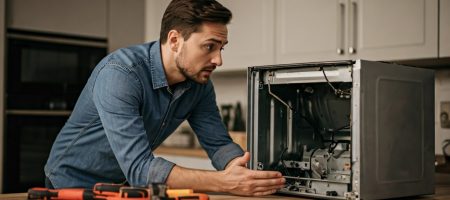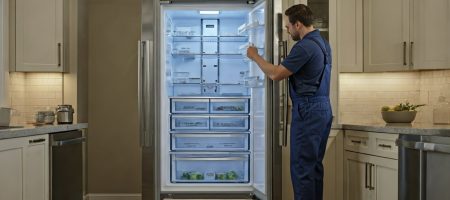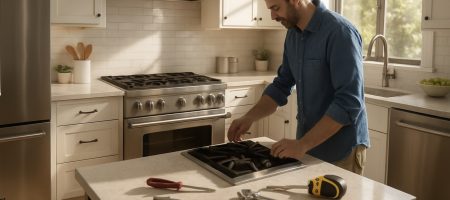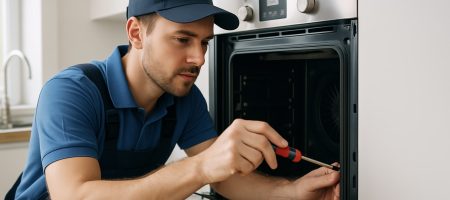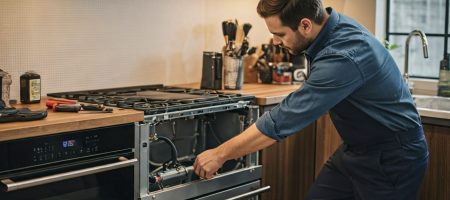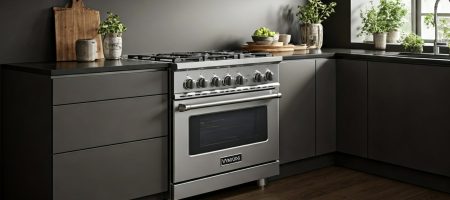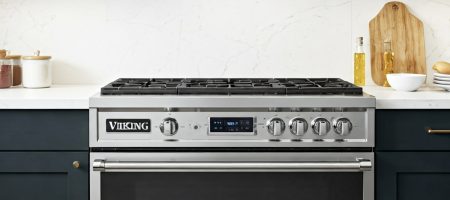An oven that fails to maintain its temperature can lead to undercooked or overcooked meals, making meal preparation frustrating. If your oven is not maintaining temperature, there are several reasons why this could be happening. As professional appliance repair technicians, we’ll guide you through the most common causes and step-by-step solutions to get your oven back to working condition.
Common Reasons Why Your Oven is Not Maintaining Temperature
When an oven is not maintaining temperature, several factors could be causing the issue. From faulty components to improper usage, identifying the root cause is essential for effective troubleshooting. Below are the most common reasons why your oven struggles to hold a consistent temperature.
1. Faulty Temperature Sensor
The temperature sensor is responsible for detecting and regulating the oven’s heat levels. If the sensor malfunctions, the oven may overheat or fail to reach the set temperature.
How to Fix:
- Locate the sensor inside the oven, typically at the upper rear wall.
- Inspect it for damage or displacement.
- Use a multimeter to check for continuity; if faulty, replace the sensor.
- Ensure it is not touching the oven wall, as this can affect readings.
2. Defective Bake or Broil Element
For electric ovens, the bake and broil elements provide heat. If these elements burn out, your oven may struggle to maintain temperature.
How to Fix:
- Turn off power to the oven and visually inspect the elements for visible damage or burn marks.
- Use a multimeter to test for continuity.
- If defective, replace the affected heating element.
3. Malfunctioning Oven Thermostat
The thermostat regulates the oven’s temperature. A faulty thermostat may cause uneven heating or constant temperature fluctuations.
How to Fix:
- Use an oven thermometer to compare the set temperature with the actual temperature.
- If the readings are inconsistent, recalibrate the thermostat.
- If recalibration does not work, replace the thermostat.
4. Faulty Igniter (Gas Ovens)
Gas ovens rely on an igniter to heat the oven. A weak or broken igniter can cause incomplete heating cycles, leading to temperature inconsistencies.
How to Fix:
- Observe if the igniter glows when the oven is turned on.
- If it glows but fails to ignite the gas, it may be weak and require replacement.
- If it does not glow at all, replace it immediately.
5. Calibration Issues
Over time, ovens may require calibration to ensure accurate temperature settings. If your oven is consistently too hot or too cold, calibration may be necessary.
How to Fix:
- Check your oven’s user manual for calibration instructions.
- Use an oven thermometer to compare set and actual temperatures.
- Adjust the settings accordingly, typically using the oven’s control panel.
6. Dirty or Faulty Oven Control Board
The control board is responsible for regulating the oven’s functions. If it is malfunctioning, the oven may not maintain the correct temperature.
How to Fix:
- Inspect the control board for visible signs of damage such as burnt components.
- Try resetting the oven by unplugging it for a few minutes and reconnecting it.
- If the problem persists, replace the control board.
7. Poor Oven Door Seal
A worn-out oven door gasket can lead to heat escaping, preventing the oven from maintaining temperature.
How to Fix:
- Inspect the rubber gasket around the oven door for wear or damage.
- Close the oven door and check for any gaps.
- If the seal is damaged, replace it with a new one.
8. Power Supply Issues
Fluctuations in electrical power or gas supply can impact the oven’s ability to maintain temperature.
How to Fix:
- Ensure your oven is properly plugged in and receiving the correct voltage.
- If using a gas oven, check that the gas valve is fully open and the gas line is not obstructed.
Preventive Maintenance Tips
Taking proactive steps can help prevent temperature fluctuations and ensure your oven operates efficiently. Regular maintenance, proper usage, and timely inspections can significantly extend the lifespan of your appliance while keeping it in top working condition.
- Regularly clean the oven to prevent buildup that can interfere with heating.
- Inspect and replace worn-out parts like heating elements, gaskets, and igniters as needed.
- Use an oven thermometer to monitor temperature accuracy.
- Schedule periodic professional maintenance to keep your oven in top condition.
FAQs
1. Why does my oven take longer than usual to heat up?
This could be due to a faulty heating element, a weak igniter, or calibration issues. Checking these components can help restore proper heating performance.
2. How do I know if my oven thermostat is broken?
Use an oven thermometer to compare actual temperatures to the set temperature. If the readings are off by more than 10-15 degrees consistently, the thermostat may need recalibration or replacement.
3. Can I replace the temperature sensor myself?
Yes, replacing the sensor is relatively simple. Ensure the oven is unplugged, remove the screws securing the sensor, disconnect it, and install a new one.
4. When should I call a professional for oven repair?
If troubleshooting steps do not resolve the issue or if you notice electrical sparks, gas leaks, or persistent temperature inconsistencies, it’s best to call a professional repair technician.
Final Thoughts
If your oven is not maintaining temperature, it’s crucial to identify the root cause and apply the right solution. Whether it’s a faulty sensor, heating element, or control board, addressing these issues promptly ensures efficient and safe cooking. Regular maintenance and timely repairs can extend your oven’s lifespan and improve performance.
If your oven requires professional attention, Viking Appliance Repair Pros is here to help. Our skilled technicians specialize in diagnosing and repairing oven temperature issues quickly and efficiently. Contact us today!
For more appliance tips, check out our blog on the Top 6 Tips for Preventing Oven Malfunctions.



